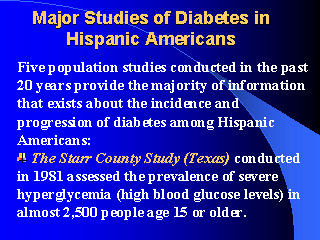|
|
|
|
front |1 |2 |3 |4 |5 |6 |7 |8 |9 |10 |11 |12 |13 |14 |15 |16 |17 |18 |19 |20 |21 |22 |23 |24 |25 |26 |27 |28 |29 |30 |31 |32 |33 |34 |review |
 |
Diabetes is widely recognized as one of the leading causes of death and
disability in the United States. According to death certificate data, diabetes
contributed to the deaths of more than 193,140 persons in 1996. Diabetes is
associated with long-term complications that affect almost every major part of
the body. It contributes to blindness, heart disease, strokes, kidney failure,
amputations, and nerve damage. Uncontrolled diabetes can complicate pregnancy,
and birth defects are more common in babies born to women with diabetes.
Diabetes is not contagious. However, certain factors can increase one's risk of developing diabetes. People who have family members with diabetes (especially Type 2 diabetes), who are overweight, or who are African American, Hispanic, or Native American are all at greater risk of developing diabetes. Presently, there is no cure for diabetes mellitus - only prevention and control. Type 2 diabetes is more common in older people, especially older women who are overweight, and occurs more often among African Americans, Hispanics, and American Indians. Compared with non-Hispanic whites, diabetes rates are about 60 percent higher in African Americans and 110 to 120 percent higher in Mexican Americans and Puerto Ricans. American Indians have the highest rates of diabetes in the world. Among Pima Indians living in the United States, for example, half of all adults have Type 2 diabetes. The prevalence of diabetes is likely to increase because older people, Hispanics, and other minority groups make up the fastest growing segments of the U.S. population (NIDDK). |